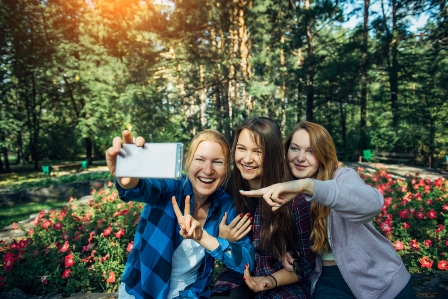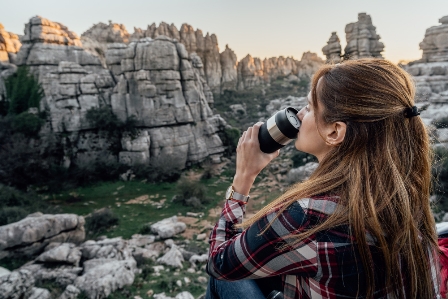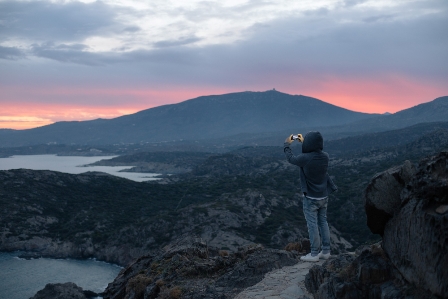Welcome to the world of travel photography! Whether you’re a professional photographer or just a passionate traveler looking to capture the essence of your journeys, this comprehensive guide will equip you with the essential gear and techniques to take amazing shots. In this article, we’ll explore everything from the must-have equipment for travel photography to expert tips on composition, lighting, and post-processing. So grab your camera and let’s embark on an exciting adventure through the lens!
Choosing the Right Camera
When it comes to travel photography, choosing the right camera is crucial. A lightweight and compact camera will make your journey more enjoyable and ensure you never miss a shot. Mirrorless cameras are gaining popularity in the travel photography community due to their small form factor and excellent image quality. Some popular mirrorless options include the Sony Alpha series, Fujifilm X-T4, and Canon EOS R. However, if you prefer the traditional DSLR, models like the Nikon D750 and Canon EOS 6D Mark II are great choices too.
Lens Selection: The Key to Great Shots
The lens you use plays a significant role in the quality of your travel photographs. A versatile zoom lens, such as a 24-70mm or 18-135mm, is ideal for capturing a wide range of subjects, from sweeping landscapes to detailed portraits. Additionally, consider adding a prime lens to your gear collection for low-light situations or achieving that beautiful bokeh effect. Prime lenses like the 35mm f/1.8 or 50mm f/1.4 are excellent choices for travel photography.
Mastering Composition Techniques
Composition is the art of arranging elements within a photograph to create a visually pleasing image. To capture compelling travel photos, it’s essential to understand and apply composition techniques. The rule of thirds, leading lines, symmetry, and framing are some common techniques used by photographers to add interest and balance to their shots. Experiment with these techniques and let your creativity shine through your compositions.
Understanding Lighting for Stunning Photos
Lighting is a fundamental aspect of photography. To capture stunning travel photos, it’s crucial to understand how light behaves and how to use it to your advantage. Golden hour, the period shortly after sunrise or before sunset, offers soft and warm light, creating a magical atmosphere. Embrace the golden hour and experiment with backlighting, silhouettes, and long shadows to add depth and drama to your images.
Utilizing Filters for Creative Effects
Filters are valuable tools for travel photographers. They allow you to enhance colors, reduce glare, and add creative effects to your photos. A polarizing filter is a must-have for landscape photography as it helps cut through reflections and increase color saturation. Neutral density (ND) filters are useful for long exposure shots, capturing the motion of waterfalls or rivers. Experiment with different filters and see how they can elevate your travel photos.
Camera Settings for Travel Photography
Understanding and mastering your camera settings is essential for capturing great travel photos. Shooting in manual mode gives you full control over the exposure, allowing you to achieve the desired results. Start by setting your ISO, aperture, and shutter speed based on the lighting conditions. Use a low ISO for well-lit scenes to minimize noise and a higher ISO for low-light situations. Adjust the aperture to control the depth of field, and select an appropriate shutter speed to freeze or blur motion.
Post-Processing: Enhancing Your Images
Post-processing is the final step in the journey of travel photography. While it’s important to strive for great shots in-camera, post-processing can take your images to the next level. Software like Adobe Lightroom and Capture One Pro provide powerful tools for adjusting exposure, enhancing colors, and fine-tuning your photos. Remember to keep your edits natural and true to the scene you captured.
Safety and Protection for Your Gear
When traveling, it’s essential to protect your camera gear from damage and theft. Invest in a sturdy camera bag that provides ample padding and compartments to keep your equipment secure. Consider using lens filters to protect your lenses from scratches and accidents. Additionally, always have a backup storage solution, such as extra memory cards or portable hard drives, to ensure you never run out of storage space during your travels.
Tips for Capturing Portraits on the Go
Portraits are an integral part of travel photography, allowing you to document the people and cultures you encounter. When taking portraits, engage with your subjects, and seek their permission whenever possible. Use a wide aperture to create a shallow depth of field and make your subject stand out from the background. Experiment with different angles, compositions, and lighting techniques to capture the essence of the people you meet.
Creating Striking Landscapes
Travel photography is incomplete without capturing the breathtaking landscapes of your destinations. To create striking landscape photos, scout locations in advance and plan your shots during the golden hour or blue hour for beautiful lighting. Use leading lines and foreground elements to create depth and guide the viewer’s eye into the frame. Don’t forget to use a sturdy tripod to ensure sharp images, especially during long exposures.
Photographing Wildlife in its Natural Habitat
Encountering wildlife during your travels can be a thrilling experience. To capture stunning wildlife photos, be patient and observe their behavior. Use a telephoto lens to maintain a safe distance while capturing detailed shots. Pay attention to the animal’s eyes and focus on capturing their expressions and unique behaviors. Remember to respect their space and never disturb or harm the wildlife for the sake of a photograph.
Capturing Unique Architecture
From ancient temples to modern skyscrapers, architecture offers endless opportunities for travel photography. When photographing architecture, pay attention to lines, shapes, and patterns. Explore different angles and perspectives to highlight the unique features of the structure. Consider including people in your shots to add a sense of scale and human connection to the architecture.
Documenting Local Culture and Traditions
One of the joys of travel photography is documenting the rich culture and traditions of different destinations. Immerse yourself in the local communities and festivals to capture authentic moments. Respect cultural sensitivities and always seek permission when photographing people. Look for interesting details, rituals, and expressions that reflect the unique aspects of the local culture. Your photos will become a window into the world for viewers.
Night Photography: Unveiling the Beauty of Darkness
Night photography allows you to capture the enchanting beauty that emerges after the sun sets. To capture stunning night shots, use a sturdy tripod to avoid camera shake during long exposures. Experiment with different shutter speeds to capture light trails, starry skies, and vibrant cityscapes. Embrace the contrast between light and darkness to create captivating compositions that evoke a sense of mystery and wonder.
Overcoming Challenges: Weather and Environmental Factors
Travel photography often presents challenges, such as unfavorable weather conditions and environmental factors. Embrace these challenges as opportunities to create unique and captivating images. Rainy days can add drama and reflections to your photos, while foggy landscapes create a sense of mystery. Protect your gear from extreme weather conditions and use lens hoods to prevent lens flare in bright sunlight.
Travel Photography Ethics: Respecting People and Places
As a travel photographer, it’s essential to practice ethical photography and respect the people and places you encounter. Seek permission before photographing individuals and be mindful of cultural sensitivities. Avoid exploiting vulnerable communities for the sake of a photograph. Treat the environment with care and leave no trace. Remember, your photographs should celebrate and honor the beauty and diversity of the world.
Keeping Your Gear Lightweight and Compact
When traveling, it’s important to keep your gear lightweight and compact for ease of mobility. Assess your equipment and pack only the essentials for your trip. Invest in versatile gear that serves multiple purposes, such as a travel tripod that doubles as a hiking pole. Consider mirrorless cameras and compact lenses that offer excellent image quality without weighing you down.
Planning and Research: Maximizing Photographic Opportunities
Effective planning and research can significantly enhance your travel photography experience. Study your destination before your trip, research popular landmarks, hidden gems, and local events. Check the weather forecast to anticipate ideal shooting conditions. Create a shot list to ensure you capture the must-see locations and unique aspects of the place you’re visiting. Planning ahead allows you to make the most of your time and photographic opportunities.
Tips for Candid Street Photography
Candid street photography offers a glimpse into the authentic moments of everyday life in a city or town. Blend into the surroundings and observe the scenes unfolding before you. Use a wide-angle lens to capture the energy and atmosphere of the streets. Shoot from the hip or pre-focus your lens for quick and discreet shots. Look for interesting characters, interactions, and moments that tell stories within a single frame.
Using Reflections and Shadows for Artistic Shots
Reflections and shadows can add a touch of artistry and intrigue to your travel photos. Seek out reflective surfaces like water bodies, glass windows, or polished surfaces to capture captivating mirror images. Pay attention to the interplay of light and shadows, as they can create depth and dimension in your compositions. Experiment with different angles and perspectives to make the most of these creative elements.
Mobile Photography: Capturing Moments on the Go
In this digital age, smartphones have become powerful tools for travel photography. With advanced camera capabilities and editing apps, you can capture and edit stunning images on the go. Experiment with different camera modes, such as HDR or Pro mode, to have more control over your smartphone photography. Invest in external lenses to expand the creative possibilities of your mobile photography.
Creating a Powerful Photography Portfolio
Building a strong photography portfolio is essential for showcasing your work and attracting clients or opportunities. Curate a selection of your best travel photographs that represent your unique style and vision. Organize your portfolio into cohesive themes or destinations to tell a compelling visual story. Use high-quality prints or a professional website to display your work and create a lasting impression on viewers.
Tips for Shooting in Challenging Lighting Conditions
Sometimes, you may encounter challenging lighting conditions during your travels, such as harsh midday sun or dimly lit interiors. To overcome these challenges, use techniques like fill flash or reflectors to balance the exposure and reduce harsh shadows. Shoot in RAW format to retain more details in the highlights and shadows, allowing for better post-processing adjustments. Embrace the lighting conditions and get creative with your compositions.
Understanding Depth of Field and Focus
Depth of field refers to the area in a photograph that appears sharp and in focus. It’s a powerful tool for emphasizing your subject and creating a sense of depth in your images. Use a wide aperture (small f-number) for a shallow depth of field, isolating your subject from the background. Conversely, a narrow aperture (large f-number) allows for a greater depth of field, ensuring that both your subject and the background are in focus.
Mastering the Art of Postcard-Worthy Travel Photography
Postcard-worthy travel photography captures the essence of a place and transports viewers to that destination. To achieve this, focus on capturing iconic landmarks or unique features that define the location. Pay attention to composition, lighting, and perspectives that highlight the beauty and character of the place. Infuse your own artistic style and vision into the images, creating a collection that leaves a lasting impression.
FAQs (Frequently Asked Questions)
Here are answers to some frequently asked questions about Travel Photography : Essential Gear and Techniques for Amazing Shots
The essential gear for travel photography includes a reliable camera body, versatile zoom lens, prime lens, tripod, memory cards, extra batteries, camera bag, lens filters, and a cleaning kit.
To improve composition, use techniques like the rule of thirds, leading lines, symmetry, and framing. Experiment with different angles and perspectives to add interest and balance to your shots.
The best time to capture travel photos is during the golden hour, shortly after sunrise or before sunset. The soft and warm light during this time adds a magical quality to your images.
Shooting in RAW format allows for greater flexibility in post-processing, as it retains more details and allows for better adjustments. However, if you prefer a smaller file size and less post-processing, shooting in JPEG format is also a viable option.
To protect your camera gear while traveling, invest in a sturdy camera bag with ample padding and compartments. Use lens filters to protect your lenses, and consider a backup storage solution like extra memory cards or portable hard drives.
Conclusion
Travel photography is a wonderful way to document your adventures, explore different cultures, and create lasting memories. By having the essential gear, mastering composition techniques, understanding lighting, and utilizing filters, you can capture amazing shots that truly reflect the beauty and uniqueness of your travel experiences. Remember to respect the people and places you photograph, and let your creativity guide you in creating stunning images. So pack your bags, grab your camera, and embark on a journey of visual storytelling through travel photography.




